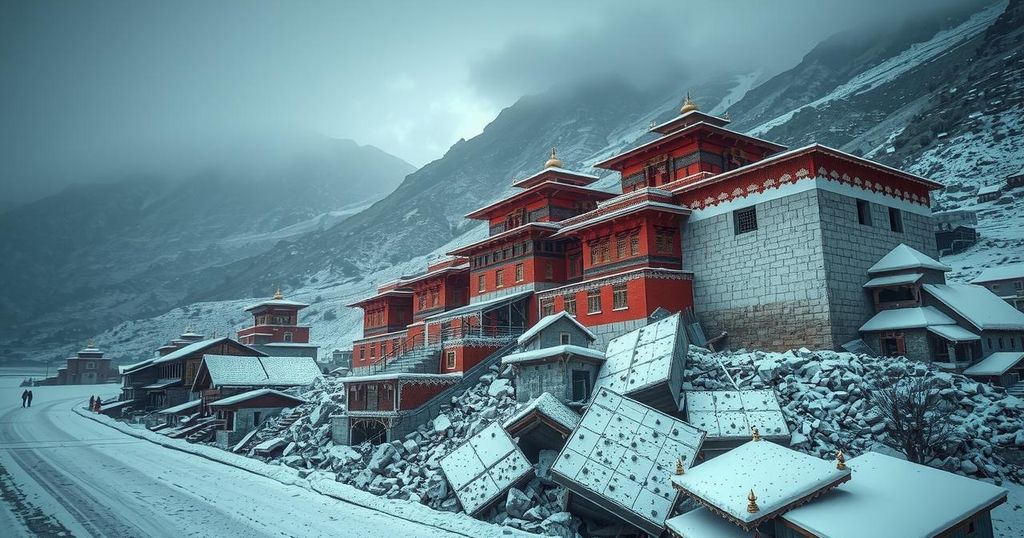Devastating Earthquake in Tibet Claims Over 100 Lives and Leaves Many Injured

A 6.8-magnitude earthquake in Tibet killed at least 126 people and injured 188 on January 7. Over 3,600 houses were destroyed, and rescue efforts are hindered by severe cold and aftershocks. More than 400 individuals have been rescued, while many remain unaccounted for. China has deployed over 3,400 personnel to assist in rescue operations, amidst ongoing concerns related to governance and religious freedoms in the region.
On January 7, a devastating 6.8-magnitude earthquake struck the Tingri district of Tibet, resulting in a tragic loss of life and significant destruction. Reports indicate that at least 126 individuals have perished, while 188 others sustained injuries. Rescue operations are ongoing, as authorities work to locate those trapped beneath the rubble of over 3,600 destroyed homes in Shigatse prefecture, despite severe weather conditions complicating these efforts. Eyewitness accounts describe the force of the earthquake causing buildings to “shatter” and emphasizing the dire need for temporary shelters and heating solutions for those affected.
The tremors were felt beyond Tibet, impacting neighboring regions, including Nepal, Bhutan, and India. Rescue efforts are further challenged by more than 500 aftershocks following the main quake and temperatures plummeting to -18°C. Emergency response has mobilized over 1,800 rescue workers alongside 1,600 soldiers to assist in addressing the aftermath of this natural disaster. Furthermore, China has faced criticism over its historical governance of Tibet, with some alleging religious repression as a sensitive issue in the region’s political discourse.
The earthquake that struck Tibet is part of a broader context involving the region’s complex political history. Tibet, an autonomous region in southwestern China, was officially incorporated into the nation in 1951 after a brief period of independence following the fall of the Qing Dynasty. Despite being granted autonomy in 1965, the region remains a point of contention, particularly concerning issues of religious freedom and cultural preservation. The Chinese government asserts that it has significantly improved conditions in Tibet, although many exiled Tibetans dispute this claim, arguing that their cultural identity and religious practices are under threat from the state.
The recent earthquake in Tibet has resulted in a catastrophic impact on the local population, with significant loss of life and ongoing rescue operations hampered by harsh weather and aftershocks. As the region grapples with the physical and socio-political ramifications of this disaster, the situation remains critical, highlighting both the natural and man-made challenges faced by the people of Tibet. The response from local authorities and the central government will be crucial in determining the immediate future of the earthquake-affected communities.
Original Source: babel.ua






